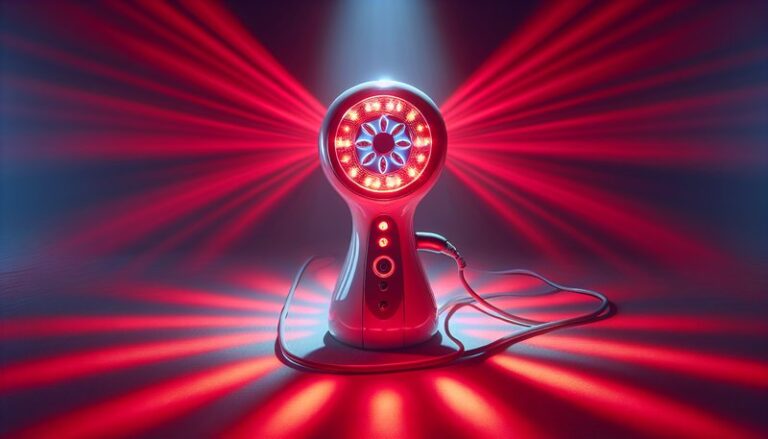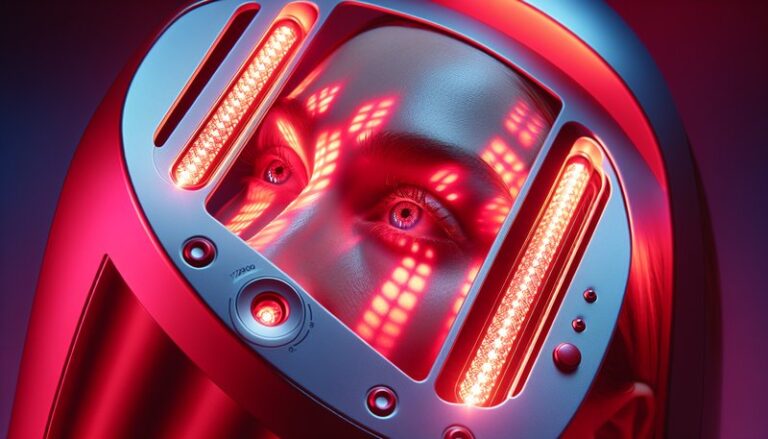How Often To Do Red Light Therapy On Face?
Have you been curious about incorporating red light therapy into your skincare routine?
This article will explore the optimal frequency for using red light therapy on your face, highlighting its benefits, considerations, alternatives, and answering common questions related to this innovative treatment.
Key Takeaways
- Regular red light therapy can improve skin texture and reduce signs of aging.
- Frequency of use can vary based on individual skin goals and device type.
- Understanding your skin type and treatment areas is crucial for optimal results.
What is Red Light Therapy?
Red light therapy (RLT) is a non-invasive treatment that uses specific wavelengths of light to penetrate the skin, promoting healing and regeneration at the cellular level. Initially developed for medical purposes, RLT is now widely sought after in the skincare community for its potential anti-aging and healing properties.
The therapy typically involves the use of LED light devices that emit red and near-infrared light. As the light penetrates the skin, it helps improve circulation, reduce inflammation, and boost collagen production, which are all crucial for maintaining youthful skin.
What are the Benefits of Red Light Therapy?
Red light therapy offers numerous advantages that can enhance skin health and appearance. The following points highlight some key benefits you can expect from regular treatment.
Improved Skin Texture
RLT promotes collagen production, which helps plump the skin and reduce the appearance of fine lines and wrinkles. Regular sessions can lead to smoother skin, making it an excellent choice for those seeking a more youthful complexion.
Reduced Inflammation
One of the remarkable properties of red light is its ability to decrease inflammation. This can aid in the treatment of skin conditions such as acne, rosacea, and psoriasis, providing relief and promoting healing in problematic areas.
Get all the facts in Benefits of Red Light Therapy for Skin
Enhanced Wound Healing
RLT is known for accelerating the healing process in tissues, making it beneficial for post-surgical scars or acne lesions. The increased circulation and cellular activity foster a faster recovery, offering visible improvements over time.
Increased Overall Radiance
Users often report a healthy glow following red light therapy sessions. The stimulating effects on circulation not only improve skin health but can also create a vibrant, youthful appearance.
Is it Possible to Do Red Light Therapy Daily?
The frequency of red light therapy sessions can vary based on individual skin needs and goals. While some may benefit from daily treatments, others might find a few times a week sufficient.
What are the Advantages of Daily Sessions?
Daily sessions can lead to quicker results, especially for those targeting specific conditions or signs of aging. Increased frequency can enhance collagen synthesis and cellular repair, leading to more pronounced effects.
What are the Disadvantages of Daily Sessions?
Frequent treatments may sometimes result in temporary discomfort or skin sensitivity, especially for first-time users. It is essential to monitor your skin’s response closely and adjust frequency accordingly.
What are the Things to Consider Before Starting Red Light Therapy?
Before integrating red light therapy into your routine, consider the following important factors.
Skin Type
Different skin types may react differently to RLT. Individuals with sensitive skin should start with fewer sessions to minimize adverse reactions.
Time Commitment
Consistency is key in achieving desired results. Ensure you can commit to the recommended frequency, whether it’s daily or a few times per week.
Device Quality
Not all red light devices are created equal. Researching and investing in a reputable device with appropriate wavelength specifications is vital for effective treatment.
What are the Alternatives to Red Light Therapy?
There are several alternatives to red light therapy that can also improve skin health and appearance.
Microdermabrasion
This treatment exfoliates the outer layer of dead skin cells, improving texture and promoting cell turnover. It’s a popular choice for those seeking to rejuvenate their skin.
Chemical Peels
Chemical peels use various acids to slough off dead skin layers, revealing fresher skin underneath. They are effective for addressing pigmentation, fine lines, and acne.
LED Light Masks
These devices combine various wavelengths of light (including blue and green) for targeted treatment, like acne reduction and skin brightening. They are user-friendly and can be used in the comfort of your home.
Conclusion: Is it Recommended to Do Red Light Therapy Daily?
In conclusion, red light therapy can be a valuable addition to your skincare routine, with the ability to significantly enhance skin health and appearance. While daily sessions may offer accelerated results, it is essential to listen to your skin and adjust the frequency based on individual responses. Consultation with a skincare professional can also help determine the best regimen tailored to your needs.
Frequently Asked Questions
How long should I use red light therapy on my face?
Typically, sessions range from 10 to 20 minutes, depending on the device’s specifications and your skin’s sensitivity. Always follow the guidelines provided with your device.
Can anyone use red light therapy?
Most people can safely use red light therapy, but those with specific skin conditions or concerns should consult with a healthcare provider before starting treatment.
Are there any side effects?
Possible side effects include temporary redness or sensitivity, especially for first-time users. These symptoms usually resolve quickly.
How quickly will I see results?
Results can vary based on individual skin types and conditions, but many users notice improvements within a few weeks of regular use.
Discover the in-depth guide Can Red Light Therapy Aid Cancer?
Can I combine red light therapy with other treatments?
Yes, RLT can generally be combined with other skincare treatments. However, it’s advisable to space out sessions or consult a dermatologist for tailored advice.





